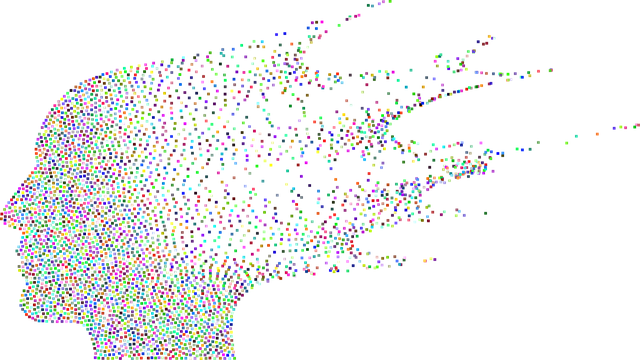Stress Management for ASD: Structured Techniques with Parker Therapy
Parker Autism Spectrum Disorder (ASD) Therapy offers specialized stress management workshops tailore…….
In the complex landscape of neurodiversity, “Parker Autism Spectrum Disorder (ASD) Therapy” has emerged as a transformative approach, offering hope and improved quality of life for individuals navigating the challenges of autism spectrum disorders. This comprehensive therapy goes beyond traditional interventions by embracing innovative strategies, evidence-based practices, and a deep understanding of each individual’s unique needs. The following exploration delves into the intricacies of this therapeutic paradigm, its global reach, and its potential to reshape the lives of those on the autism spectrum.
Definition: Parker ASD Therapy is an integrated, personalized treatment approach designed to support individuals with autism spectrum disorders (ASD) across various domains, including social communication, emotional regulation, and adaptive behaviors. It is a holistic methodology that combines elements from applied behavior analysis (ABA), cognitive behavioral therapy (CBT), and other evidence-based practices tailored to each client’s specific needs.
Core Components:
Personalized Assessment: The foundation lies in a comprehensive assessment that considers each individual’s strengths, challenges, and unique characteristics. This involves detailed interviews, observations, and standardized tests to create a nuanced profile.
Goal-Oriented Intervention: Therapists collaborate with clients to set achievable goals, focusing on specific areas of improvement. These goals may include enhancing social interactions, managing emotions, improving daily living skills, or developing coping strategies for sensory sensitivities.
Multi-Disciplinary Approach: Parker ASD Therapy draws from multiple therapeutic modalities:
Family Involvement: Recognizing the vital role of family support, therapists often collaborate with parents or caregivers to provide strategies for home practice, ensuring consistent reinforcement of learned skills.
Historical Context: The roots of Parker ASD Therapy can be traced back to early behaviorist theories and the pioneering work of researchers like Hans Asperger and Leo Kanner. Over time, the field evolved, incorporating cognitive-behavioral approaches and a more individualized, person-centered philosophy. Today, it stands as a comprehensive, evidence-based practice recognized for its effectiveness in improving outcomes for individuals with ASD.
The influence of Parker ASD Therapy extends far beyond geographical boundaries, shaping the global landscape of autism support. This section explores key trends and regional variations:
| Region | Trends and Observations |
|---|---|
| North America | Leading the way in early intervention, with many states mandating comprehensive ASD programs in public schools. Research-driven practices, including Parker Therapy, are widely adopted. |
| Europe | A diverse range of approaches, with countries like Britain and Germany embracing evidence-based therapies while others focus on community-based support. The European Union’s funding for autism research has fostered collaboration. |
| Asia Pacific | Rapidly growing awareness and acceptance, with countries like Japan and South Korea integrating ASD therapy into their healthcare systems. Cultural adaptations of therapeutic methods are gaining traction. |
| Middle East and Africa | Increasing recognition, with some countries implementing national strategies for autism support. Challenges include limited resources and a need for more specialized training. |
These global trends reflect a growing commitment to understanding and supporting neurodiversity, with Parker ASD Therapy playing a pivotal role in shaping inclusive practices worldwide.
The economic implications of Parker ASD Therapy are significant, impacting healthcare systems, education, and societal productivity.
Market Dynamics: The global autism therapy market is experiencing steady growth, driven by increasing awareness, rising prevalence rates, and a demand for effective interventions. According to a 2022 report, the market size was valued at USD 18.6 billion in 2021 and projected to reach USD 30.4 billion by 2028.
Investment Patterns: Public funding and private investments play crucial roles:
Economic Impact: Effective autism therapies, including Parker ASD Therapy, can yield substantial economic benefits:
Technology has revolutionized Parker ASD Therapy, offering innovative solutions and enhancing access to care.
Digital Therapy Platforms: Online platforms provide interactive, personalized therapy sessions, allowing remote access to specialized therapists. These tools use artificial intelligence (AI) to adapt content based on individual progress, ensuring a tailored experience.
Augmentative and Alternative Communication (AAC): Digital AAC devices and apps enable non-verbal individuals with ASD to communicate more effectively. These technologies range from picture communication boards to advanced speech-generating devices, fostering social interaction and independence.
Virtual Reality (VR) Therapy: VR offers immersive experiences for exposure therapy, helping individuals confront fears or anxieties in safe, simulated environments. This technology has shown promise in treating phobias, anxiety disorders, and certain ASD-related challenges.
Mobile Apps and Games: Numerous apps focus on social skills training, emotion regulation, and cognitive development, making therapy more engaging and accessible for younger clients. These tools often incorporate gamification elements to encourage practice and reinforce learning.
The development and implementation of Parker ASD Therapy are shaped by various policies and regulations, which vary across jurisdictions.
Healthcare Policies: Many countries have adopted national strategies for autism care, emphasizing early diagnosis and access to evidence-based therapies. These policies often include funding mechanisms, quality assurance standards, and guidelines for provider training.
Education Sector Initiatives: Schools are increasingly implementing comprehensive ASD programs, reflecting a shift towards inclusive education. Policies related to special education services, individual education plans (IEPs), and teacher training play crucial roles in supporting students with ASD.
Regulatory Frameworks: Health and social service agencies oversee the delivery of autism therapies, ensuring quality and safety. Licensing requirements for therapists, clinical supervision standards, and data privacy regulations are essential considerations.
International Collaboration: Organizations like the World Health Organization (WHO) and Autism Speaks facilitate global collaboration, sharing best practices and promoting consistent standards of care. International agreements also address autism research funding and knowledge exchange.
Despite its proven benefits, Parker ASD Therapy faces several challenges and criticisms that require thoughtful strategies for resolution.
Accessibility: One of the primary barriers is limited access to specialized therapists, particularly in rural or underserved areas. This issue can be addressed through technology-enabled therapy platforms and training programs that equip general educators and healthcare providers with the necessary skills.
Cost and Insurance Coverage: The cost of therapy can be a significant obstacle for many families. Policy interventions, such as expanded insurance coverage for ASD treatments, can help make these services more affordable. Public-private partnerships could also facilitate access to funding for low-income families.
Stigma and Misunderstanding: Societal stigma and misconceptions about autism persist, hindering acceptance of the therapy itself. Public awareness campaigns, educational initiatives in schools, and collaboration with advocacy groups are essential to counter these negative perceptions.
Individualization and Cultural Adaptation: While Parker ASD Therapy is designed to be personalized, adapting it to diverse cultural contexts is crucial. Sensitivity to cultural differences in communication, family dynamics, and therapeutic expression ensures that interventions remain effective and meaningful for all individuals.
The following case studies illustrate the transformative power of Parker ASD Therapy through tangible examples.
Case Study 1: John’s Journey to Social Confidence
John, a 12-year-old boy with ASD, struggled with social interactions and often felt isolated from his peers. Through Parker ASD Therapy, he learned to recognize and express emotions more effectively. The therapy incorporated social skills training, using role-play scenarios to practice greetings, sharing, and understanding social cues. With consistent practice and positive reinforcement, John’s confidence grew, leading to successful friendships at school and during extracurricular activities.
Case Study 2: Emma’s Triumph over Sensory Overload
Emma, an 8-year-old girl with ASD, experienced severe sensory sensitivities that made daily tasks challenging. Her therapists used a multi-sensory approach, incorporating deep pressure therapy, fidget tools, and structured sensory breaks to help her regulate her responses. With time, Emma became more comfortable in various environments, improved her academic performance, and developed coping strategies to manage sensory overload.
Case Study 3: Adult Employment and Independence
Michael, a young adult with ASD, sought therapy to enhance his independent living skills and prepare for the workforce. The treatment focused on executive functioning, teaching him time management, organization, and decision-making strategies. Through role-playing and real-world practice, Michael gained confidence in navigating public transportation, managing finances, and applying for jobs. He eventually secured a part-time position at a local bookstore, marking a significant milestone in his transition to adulthood.
As we peer into the future, several trends and developments point towards exciting possibilities for Parker ASD Therapy.
Emerging Technologies: Advanced neurotechnologies, such as brain-computer interfaces (BCIs) and wearable sensors, show potential in monitoring and supporting individuals with ASD. These tools could provide real-time data for personalized therapy adjustments and enhance our understanding of neurodiversity.
Personalized Medicine: The future may see more tailored interventions based on individual genetic profiles and brain connectivity patterns. This precision approach could optimize treatment outcomes and further personalize the therapy experience.
Community Integration: There is a growing emphasis on community-based support systems, promoting inclusion and independence for adults with ASD. This shift requires collaboration between healthcare providers, educators, employers, and community organizations to ensure a seamless transition from therapy to everyday life.
Global Collaboration and Knowledge Sharing: The international community continues to collaborate, fostering knowledge exchange and best practices in ASD research and care. Global initiatives will likely lead to more consistent standards of practice and improved access to evidence-based therapies worldwide.
Parker Autism Spectrum Disorder Therapy stands as a beacon of hope, guiding individuals on the autism spectrum towards a brighter future. Its comprehensive approach, backed by extensive research and global support, has proven effective in enhancing lives and fostering understanding. As we navigate the challenges and embrace emerging opportunities, the therapy’s impact will undoubtedly grow, shaping a more inclusive society that celebrates neurodiversity.
Q: What makes Parker ASD Therapy unique?
A: Parker Therapy distinguishes itself through its personalized, multi-disciplined approach, combining evidence-based practices tailored to each individual’s needs. It offers a holistic view of autism, addressing cognitive, behavioral, and social aspects.
Q: How early can therapy begin for children with ASD?
A: Early intervention is highly beneficial, and Parker ASD Therapy can be implemented from as young as 2 years old. Research suggests that early, intensive therapy improves long-term outcomes and supports brain plasticity.
Q: Is this therapy only for children? Can adults benefit too?
A: Absolutely! Parker ASD Therapy is designed to cater to individuals of all ages on the autism spectrum. While some aspects may adapt for different age groups, the core principles remain consistent, offering support for lifelong learning and skill development.
Q: How do I know if therapy is right for my loved one with ASD?
A: A comprehensive assessment by a qualified professional is essential. They will evaluate your loved one’s needs, goals, and challenges, determining if Parker ASD Therapy aligns with their overall treatment plan.
Q: Can technology really replace human therapists?
A: While digital tools offer incredible support, they are not intended to replace human therapists. Technology enhances access and provides additional resources, but the expertise, empathy, and individualized guidance of a trained therapist remain invaluable.

Parker Autism Spectrum Disorder (ASD) Therapy offers specialized stress management workshops tailore…….

Mental health advocacy is crucial for addressing global issues like anxiety and depression, especial…….